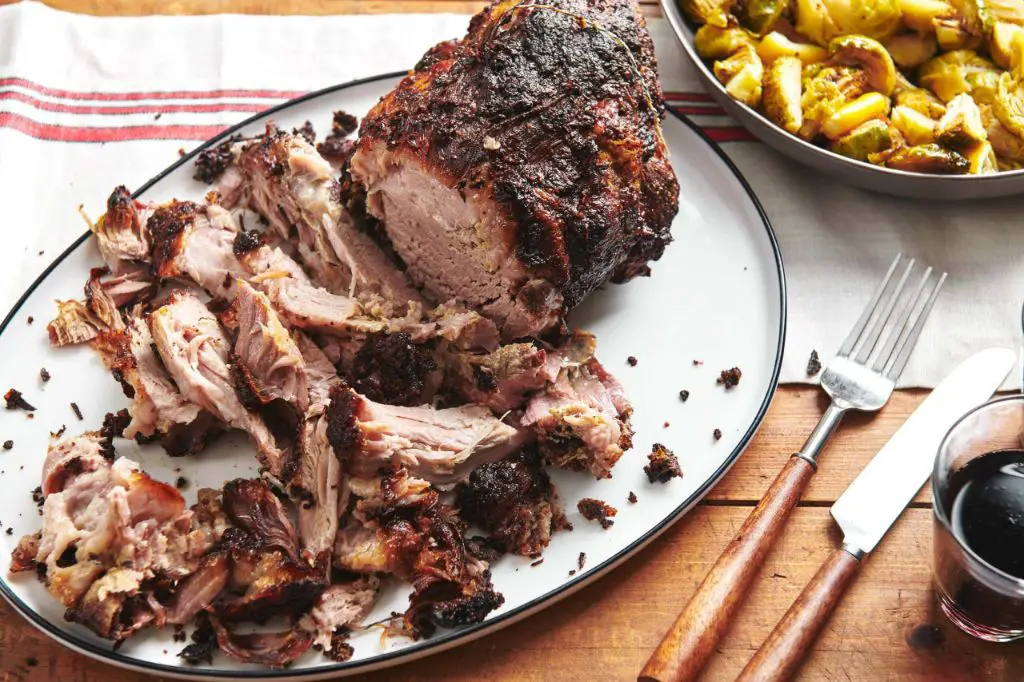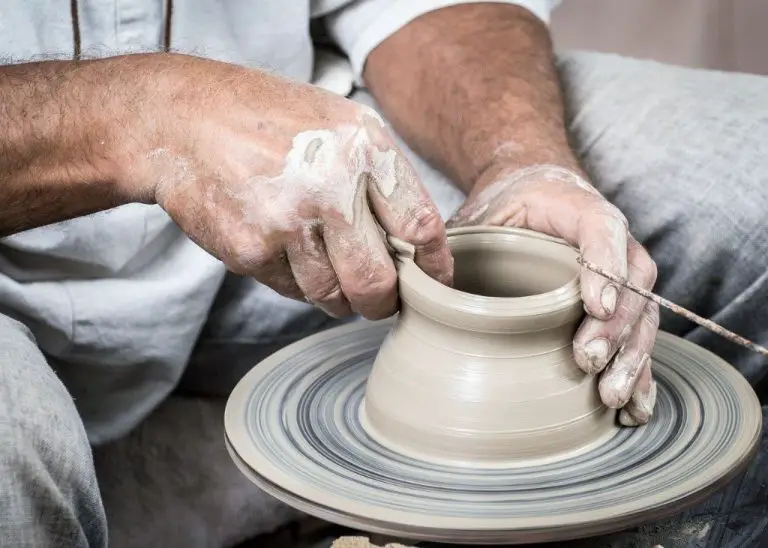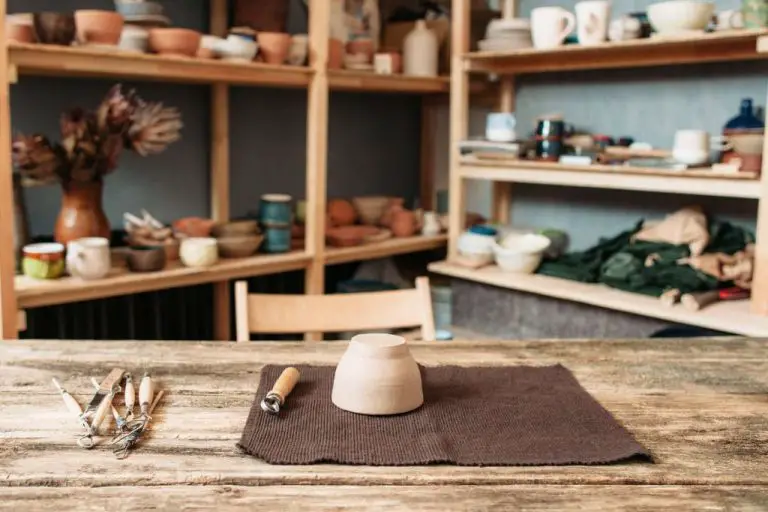Can Gail Pittman Pottery Go In The Oven?
Introducing Gail Pittman Pottery
Gail Pittman is a renowned ceramic artist from Mississippi known for her beautiful handcrafted pottery and glazed ceramic pieces. Born in 1951, Pittman started creating pottery in her backyard studio in the 1980s after taking ceramics classes. She found success selling her pottery at local craft fairs and galleries before establishing her company Gail Pittman Designs in 1988 (Source).
Pittman’s pottery style focuses on creating functional, decorative pieces for the home including vases, bowls, mugs, and baking dishes. Her glazing techniques utilize brilliant colors and patterns inspired by Impressionist paintings. Pittman hand throws her pottery on a wheel and sculpts decorative additions like ruffles, handles, and spouts using hand molding techniques. She often incorporates writing and script into her pieces as well (Source).
Pittman’s pottery is made from natural clay materials including porcelain, stoneware and earthenware clays which are then kiln-fired up to 2000°F. Her glazes are specifically formulated to complement the natural clay bodies. Gail Pittman Designs offers a wide range of functional pottery as well as sculptures, tiles, lamp bases and decorative wall pieces.
Oven Safety for Pottery
When using pottery in the oven, it’s important to be aware of potential safety hazards like thermal shock and reactions between the clay body, glazes, and oven temperature. Sudden, drastic temperature changes can cause the clay or glaze to crack or shatter, which is dangerous both for the pottery and anyone nearby. It’s crucial to follow the maker’s instructions for safe oven usage.
Some key oven safety tips for pottery include:
– Avoid extreme temperature shocks by preheating clay slowly (100°F per hour). Cool gradually after baking.
– Make sure glazes are formulated for your oven’s highest temperature.
– Don’t put cold or wet pieces directly into a hot oven – moisture can cause cracking or explosions.
– Use shelves or ceramic tiles to prevent direct contact between pots and oven racks.
It’s also important to check the clay composition. Porous, low-fire earthenware is more prone to thermal shock than vitrified stoneware or porcelain. The glaze is also a factor – a glassy glaze helps regulate heating while a matte glaze absorbs more heat. Cracks in glazes from age or use can expose the clay body and increase safety risks.
With proper care and heating methods, most oven-safe pottery will remain durable and functional when used for baking, roasting, or broiling. But understanding the potential hazards allows cooks to prevent cracking or shattering accidents.
Gail Pittman’s Official Oven Usage Recommendations
According to the official Gail Pittman website, most Gail Pittman pottery pieces are oven, microwave, and dishwasher safe up to certain temperatures. However, there are some exceptions depending on the specific material and glaze used.
For example, Gail Pittman’s Provence collection made from earthenware clay with reactive glazes is oven safe up to 350°F. Pieces from the Casual Elegance stoneware collection with resilient glazes can go up to 450°F in the oven. Meanwhile, oven-proof bakeware like casserole dishes and tagines from the Tableware collection can withstand temperatures up to 500°F.
Gail Pittman recommends checking the product descriptions and labels to verify the maximum oven temperature for each piece. She also advises gradual temperature changes to prevent thermal shock, and warns against placing hot pottery on cold surfaces or rapid cooling under cold water.
In terms of actual usage, Gail suggests using Pittman oven-safe pieces to bake pies, casseroles, breads, and more at the appropriate temperatures. Casserole dishes and baking pans should provide even heat distribution. Just avoid metal utensils or cookware that could scratch the finishes.
For more usage tips and safety guidelines, see the official care and cleaning page on GailPittman.com.
Heating Pittman Pieces in the Oven
Gail Pittman’s pottery is safe to use in the oven when proper precautions are taken. Her stoneware pieces are oven-safe up to 500°F. However, thermal shock can occur if the pottery is heated too quickly, leading to cracks or breakage.
To safely warm Pittman pots in the oven, it’s recommended to follow these tips:
- Always start by placing the pottery in a cold oven.
- Preheat the oven gradually, increasing the temperature no more than 50°F every 5 minutes.
- Allow plenty of time for the pottery to come up to temperature slowly with the oven.
- Use pot holders when removing heated items from the oven.
- Do not put hot pottery directly on cold surfaces or submerge in water.
- Allow the pottery to cool down slowly before washing.
- Avoid severe temperature changes to prevent cracks from thermal shock.
Following these oven heating tips will keep Gail Pittman’s beautiful pottery safe while enjoying all that it has to offer. As noted on Pinterest, “For oven use, put in a cold oven, warming the plate up with the oven.”
Baking and Roasting in Pittman Pans
Gail Pittman’s oven-safe stoneware and ceramic bakeware is well-suited for baking and roasting a variety of foods. Her casserole dishes, pie plates, and baking pans are glazed to be non-porous so flavors don’t soak in. The glazes are also lead-free and non-toxic, making Pittman pans safe for baking.
Pittman’s stoneware can withstand oven temperatures up to 500°F. This high heat tolerance makes the pans ideal for roasting meats and vegetables as well as baking casseroles, pies, cookies, and more. The stoneware heats evenly to produce crisp, golden crusts and exteriors without burning.

It’s best to avoid sudden temperature changes with stoneware as it can lead to cracking. Allow pans to cool gradually after baking by leaving in the cooling oven or on a heat-safe surface. Check manufacturer guidance to verify specific bakeware pieces are oven-safe. For example, Pittman’s pressed wood serving boards should not go in the oven. As long as proper care is taken, Pittman pans are reliable for everyday baking and roasting needs.
Broiling and Grilling Pittman Pieces
When broiling or grilling with Pittman pottery, it’s important to be aware of risks from direct high heat exposure. Broilers and grills can expose pottery to temperatures over 500°F, which is beyond the typical maximum recommended temperature for ceramic ware (Oven Microwave Ware).
While Pittman pieces are high-quality and durable, the glazes and clay can be vulnerable to thermal shock at extremely high temperatures. Rapid, drastic heating may cause cracking or crazing. It’s advisable to preheat Pittman cookware gradually when broiling or grilling.
For best results, bring the pottery up to temperature slowly, avoid placing directly over flames, and use lower broiler settings. Consider alternatives like using a sheet pan or choosing cast iron for very high heat. With care, Pittman pottery can still be suitable for most broiling, grilling, and baking needs.
Microwaving Gail Pittman Pottery
According to Amazon product descriptions, Gail Pittman pottery and serveware are safe to use in the microwave (https://www.amazon.com/Gail-Pittman-Designs-Hospitality-Purpose/dp/B09D5HK9PJ). Microwave-safe ceramics, like those produced by Gail Pittman, do not contain metals that could spark or materials that could leach chemicals into food.
When microwaving any ceramic, it’s important to follow safety precautions to prevent cracking or damage:
– Do not microwave items with metal trim, which can cause sparks. Stick to plain ceramic pieces.
– Avoid drastic temperature changes by microwaving food for short intervals only. Letceramic dishes cool before adding more hot food.
– Always use ceramic cookware rated for microwave use. Do not microwave pottery not intended for cooking.
– Place a microwave-safe container with some water inside when microwaving to distribute heat evenly.
– Never microwave ceramics that are wet, as moisture can lead to cracking from rapid heating.
By taking care when microwaving Gail Pittman ceramics, you can safely reheat foods without worry. Just be sure to follow any specific guidance from the manufacturer and exercise caution as you would with any ceramic in the microwave.
Other Heating Methods
While the oven is a common way to heat Gail Pittman pottery when cooking or baking, there are other methods that can be used as well. Many Pittman pieces are safe to use directly on the stovetop or over an open fire, making them quite versatile in the kitchen.
For stovetop use, Pittman’s oven-safe bakeware like casserole dishes, sauce pots, and skillets can go directly on the burner. Just be sure to use medium or low heat to avoid shocking the clay. Her glazed pieces tend to hold up better than unglazed on the stovetop. You’ll want to avoid any sudden temperature changes to prevent cracking.
Over an open campfire or grill, unglazed Pittman pots and Dutch oven pieces can be placed right into the coals or flames. The natural clay withstands high heat well. Just be sure to soak the piece in water for 10-15 minutes after cooking to remove any soot before washing.
Other methods like warming trays, slow cookers, or even carefully using a kitchen torch can also safely heat many Pittman pieces. Just avoid any sudden or drastic temperature shocks. And know your material – glazed pieces tend to prefer more moderate heating methods.
Caring for Heated Pittman Pieces
After baking, roasting, or otherwise heating Gail Pittman pottery in the oven, it’s important to let the pieces cool completely before handling or washing. Thermal shock from sudden temperature changes can cause cracking or breakage.
Once cooled, wash Pittman ovenware by hand with warm, soapy water and a soft sponge or cloth. Avoid abrasive scouring pads, as they can scratch the finish. Be gentle when cleaning decorative pieces like pitchers or serving platters.
Allow the pottery to air dry thoroughly before storing. Humidity and moisture can damage glazes over time. Store high-fired stoneware like Gail Pittman’s work in a dry place at room temperature. Keep pieces stacked with care to prevent chipping edges and rims.
With proper care after oven heating, Gail Pittman pottery will last for many years of baking, roasting, and everyday use. Her designs are meant to be functional and enjoyed. Follow her recommendations, and the pottery will become a cherished heirloom in any kitchen.
Key Takeaways
When using Gail Pittman pottery in the oven, follow these best practices:
- Check the manufacturer’s instructions for recommended oven temperatures.
- Preheat the oven fully before placing items inside.
- Use potholders when handling hot items.
- Allow adequate air circulation around pieces.
- Avoid exposing pottery to direct oven heating elements.
- Don’t put pottery directly on oven floors or walls.
- Remove stones, shells or other decor before heating.
- Let pieces cool before cleaning or putting away.
- Inspect for signs of damage after each use.
- Discontinue use if cracks, chips or other issues develop.
Following the maker’s guidance and taking proper precautions will help ensure safe, long-lasting enjoyment of Gail Pittman oven-safe pottery.


